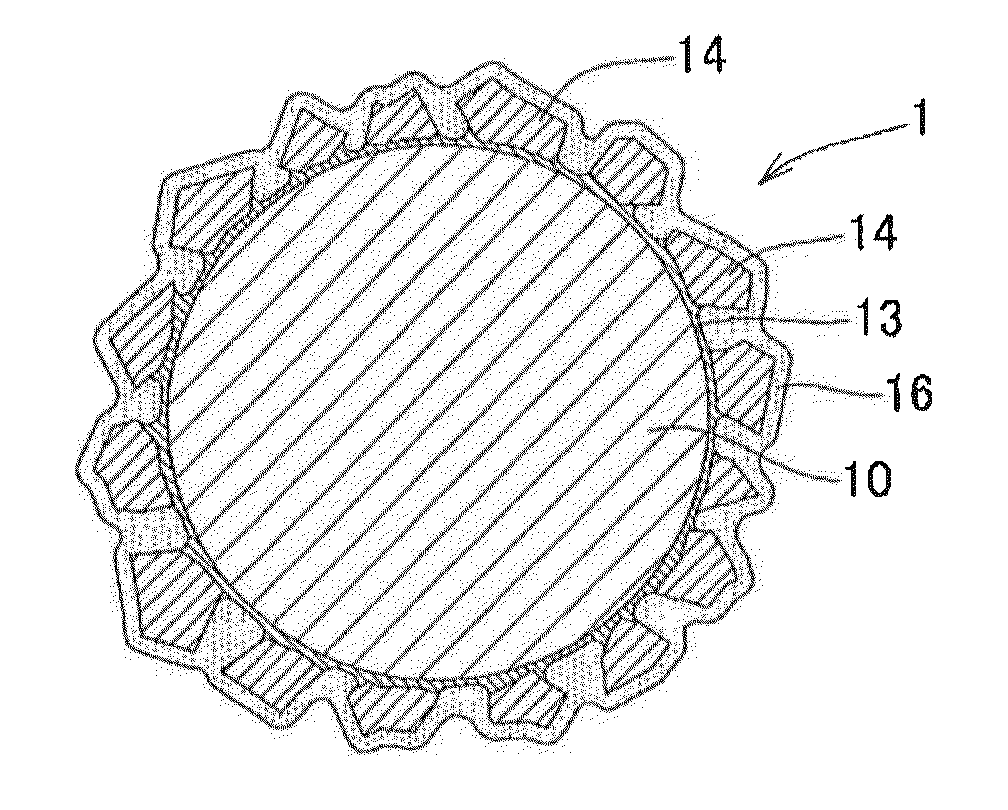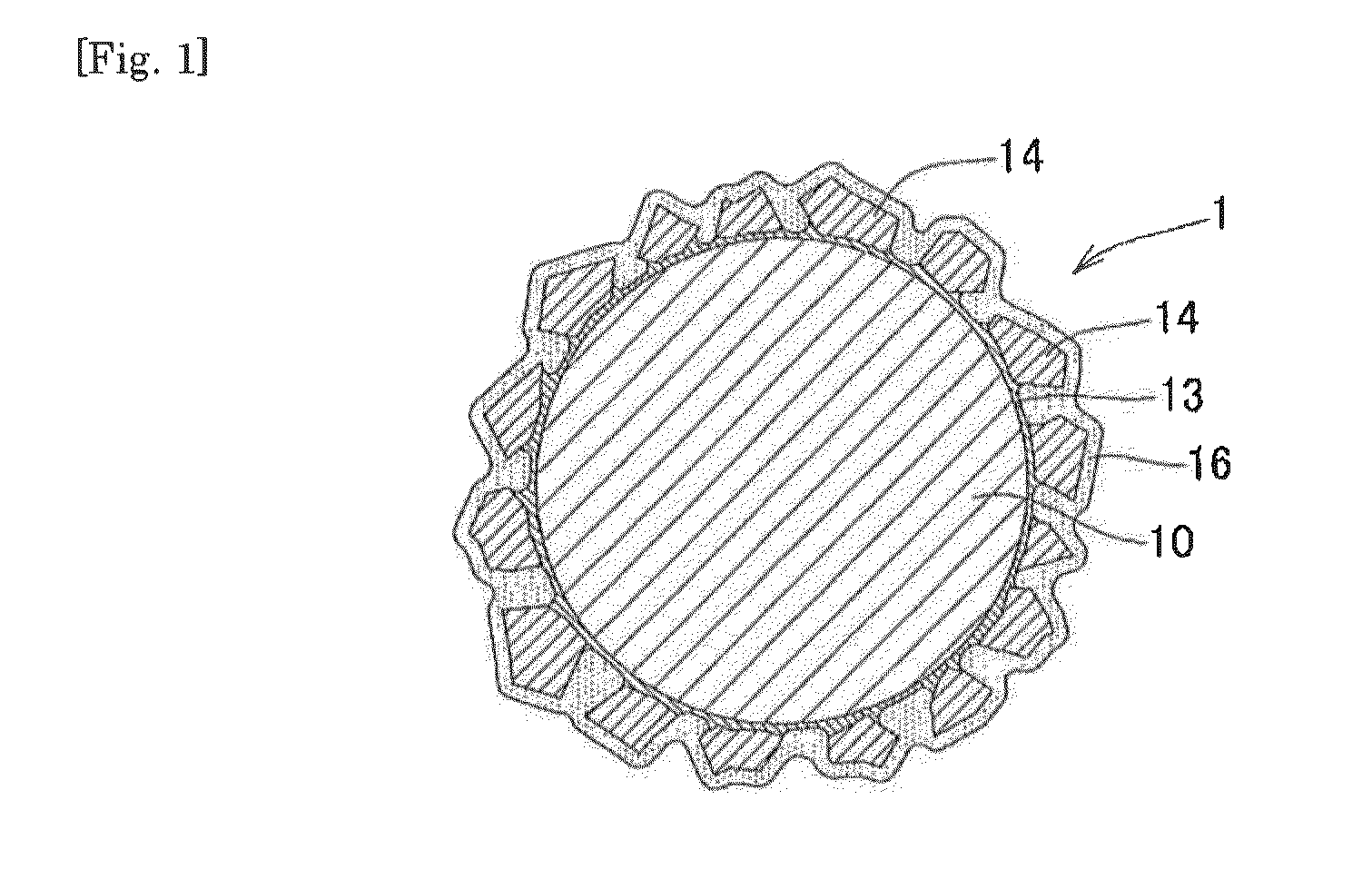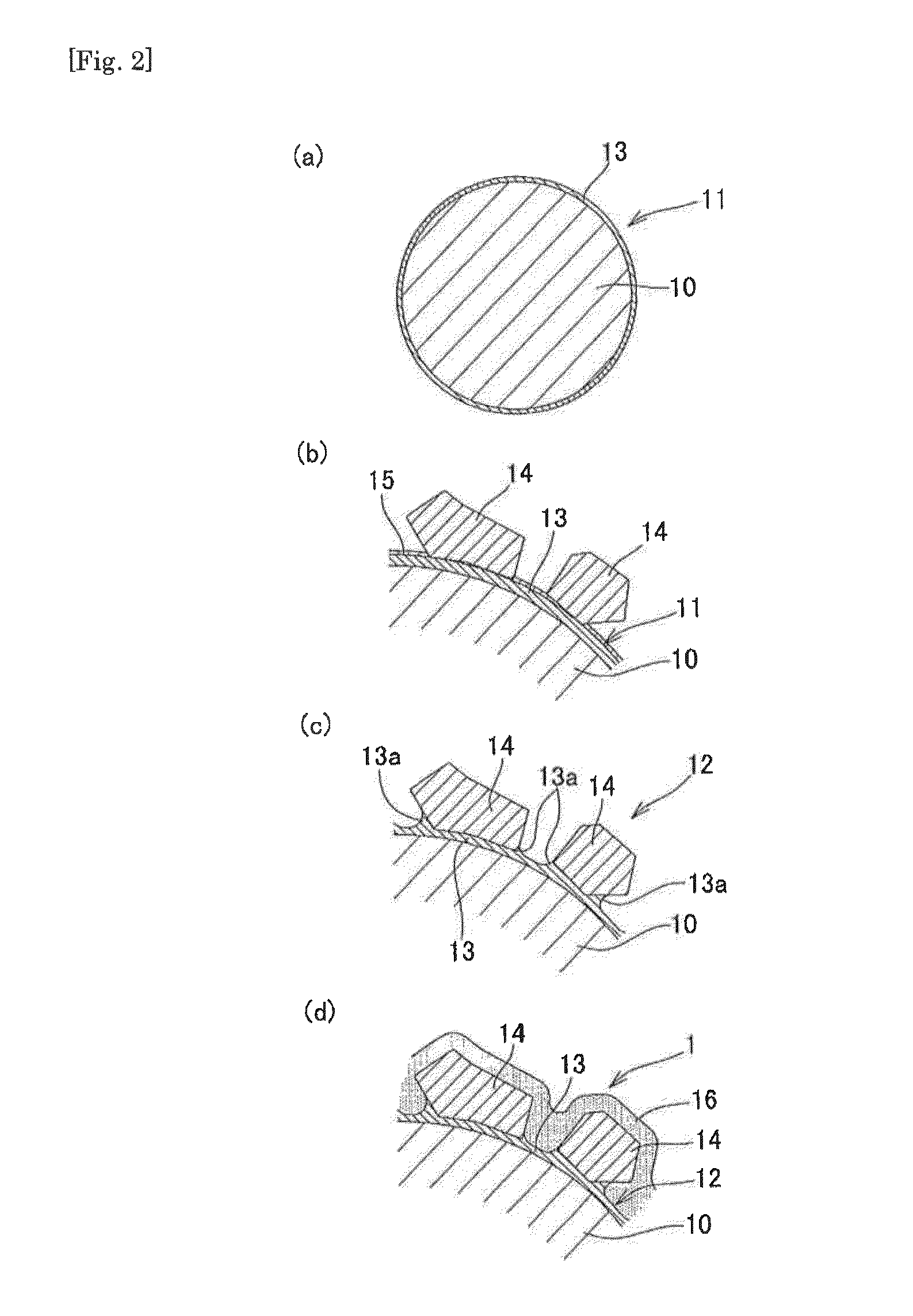Super-abrasive grain fixed type wire saw, and method of manufacturing super-abrasive grain fixed type wire saw
a technology of super-abrasive grains and fixed wire saws, which is applied in the direction of metal sawing tools, manufacturing tools, grinding devices, etc., can solve the problems of reducing the diameter of the wire saw, deteriorating the cutting quality, and low holding power of the resin, so as to improve the cutting quality and reduce the production cost. , the super-abrasive grain holding power is very high, and the effect of high production speed
- Summary
- Abstract
- Description
- Claims
- Application Information
AI Technical Summary
Benefits of technology
Problems solved by technology
Method used
Image
Examples
examples
[0092]Next, a wire saw of Example 1 manufactured by the manufacturing method of the present invention and a wire saw of Comparative Example 1 manufactured by the electrodeposition method will be described based on the photographs in FIG. 7.
[0093]The wire saw of Example 1 was manufactured by using the processes in FIGS. 3 to 5 described above. A brass plated piano wire having a diameter of 180 μm was used as the wire and a solder plating layer having a thickness of 2 to 2.5 μm was formed using an Sn—Ag alloy solder having a melting temperature of 220° C. to prepare a precoated wire. The precoated wire was wetted with a liquid, then nickel coated diamond abrasive grains having a size of 30 to 40 μm were dispersed and adhered at a wire running speed of 20 m / minute, and the solder was melted and solidified to prepare a super-abrasive-grains-temporarily-adhered wire. FIG. 7(a) is a magnified photograph of the super-abrasive-grains-temporarily-adhered wire. The solder was drawn to the per...
example 2
[0099]Wire material: brass plated piano wire
[0100]Wire diameter: 179 μm
[0101]Brazing material composition: Sn-0.7Cu-0.05Ni—Ge
[0102]Average grain diameter of diamond: about 50 μm
[0103]Metal plating composition: nickel
[0104]Metal plating thickness: 7 μm
[0105]Thickness of brazing material layer: about 1 μm
[0106]Ratio of thickness of brazing material layer (ratio with respect to average grain diameter of diamond): about 2%
example 3
[0107]Wire material: brass plated piano wire
[0108]Wire diameter: 179 μm
[0109]Brazing material composition: Sn-0.7Cu-0.05Ni—Ge
[0110]Average grain diameter of diamond: about 50 μm
[0111]Metal plating composition: nickel
[0112]Metal plating thickness: 7 μm
[0113]Thickness of brazing material layer: about 2.5 μm
[0114]Ratio of thickness of brazing material layer: about 5%
[0115]FIG. 8(a) is a photograph of the wire saw of Example 2 before processing and FIG. 8(b) is a magnified photograph of the wire saw. FIG. 9(a) is a photograph of the wire saw of Example 3 before processing and FIG. 9(b) is a magnified photograph of the wire saw. The wire saw including the brazing material layer having a small thickness of about 2% as in Example 2 led to small R on the metal plating surface on the bottom of a diamond grain as shown in FIG. 8. In contrast, the wire saw including the brazing material layer having a thickness of about 5% as in Example 3 led to larger R than that of the wire saw of Example 2 ...
PUM
| Property | Measurement | Unit |
|---|---|---|
| Fraction | aaaaa | aaaaa |
| Fraction | aaaaa | aaaaa |
| Fraction | aaaaa | aaaaa |
Abstract
Description
Claims
Application Information
 Login to View More
Login to View More - R&D
- Intellectual Property
- Life Sciences
- Materials
- Tech Scout
- Unparalleled Data Quality
- Higher Quality Content
- 60% Fewer Hallucinations
Browse by: Latest US Patents, China's latest patents, Technical Efficacy Thesaurus, Application Domain, Technology Topic, Popular Technical Reports.
© 2025 PatSnap. All rights reserved.Legal|Privacy policy|Modern Slavery Act Transparency Statement|Sitemap|About US| Contact US: help@patsnap.com



